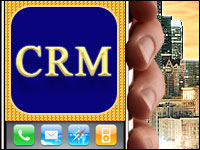
They don’t call it the Christmas rush for nothing. December weekends see masses of customers crowding stores to buy gifts, and at peak times the salespeople can appear overwhelmed. Their objective is to check out as many customers as quickly as possible — ring ’em up, bag their stuff and move to the next customer. It’s a numbers game — the faster you can move the customers out, the happier everyone is in the end.
This conveyor belt of sales might be seen as a form of employee productivity. The less time spent with each customer, the better — and the happier everyone is in the end. However, the holidays are an aberration, a time when both buyer and seller are interested in the speed of the sale over all else. Most of the time — and especially in B2B scenarios — a more leisurely pace is preferred, allowing the buyer and seller to build a relationship.
There’s still an opportunity for businesses to focus on productivity in these scenarios. Yet too many make the mistake of viewing sales in the same light as a Christmastime checkout line. Salespeople are expected to work with ever-increasing numbers of leads, with technology like CRM offered as an aid to churn through them.
Beyond the Numbers Game
The problem with this approach is that it’s productivity serving the wrong goal. If the goal is to contact the most leads possible, then great — you’ve made contact. Have you made a sale, or built a relationship? Not when you’re playing the numbers game. In fact, simply increasing lead numbers can cause your sales teams’ rate of closed sales to decrease.
Expecting more contacts to translate into a proportional increase in sales is a fallacy, explains Richard Boardman, founder of Mareeba CRM Consulting. It’s not productivity aimed at a useful business goal — it’s busy work.
Productivity doesn’t mean less time spent with each potential customer. Instead, real productivity comes when CRM allows you to spend more time with the right customers — the ones that have been identified by marketing as best qualified and most likely to buy. Time invested with these customers is worthwhile because it is far more likely to result in sales, and then once a sale is complete, it can lead to future sales — but only if you put the time in to cultivate a relationship with that customer.
Quality Time
Relationships require time — which your sales reps won’t have if they’re playing the numbers game. It takes time and attention to do this properly, and if you’re oriented around recurring sales, it’s a critical tool to your business’s survival.
This does not mean you shouldn’t use technology to increase the productivity of your salespeople. There are ample opportunities to do this: According to CSO Insights’ 2011 Sales Optimization Survey, sales people spend about 41 percent of their time selling face-to-face or over the phone. The other 59 percent of their time is occupied by things like generating leads and doing research (24 percent) and attending meetings (19 percent). Technology, properly applied, cuts down the time devoted to these tasks and move those saves minutes into the “selling time” category.
Unfortunately, the survey showed that the amount of time spent selling had slipped in five years from 46 percent to 41 percent — even as technology was being introduced in a more widespread fashion. This points out how critical it is to select CRM applications that are designed with the user first; sales reps’ jobs are still based on sales, not on administration, and saddling them with last-generation CRM applications designed for their managers may give the managers better visibility but hurts the sales reps’ productivity — and keeps them away from the act of selling.
Don’t eliminate time with customers — eliminate time spent doing administrative tasks. Unburden sales reps from repetitive and easily automated tasks and free them up for the activities that will pay off in a bigger way — namely, spending more quality time with customers.
























































Great comments on sales priorities – It is AM azing to me that sales people are bogged down with activities other than selling. Giving sales people more time to sell could be the most impactful thing you do for your bottom line. The following info graphic on "The Other Cost Of Sales" sheds even more light on this issue:
http://www.domo.com/learn/7/139#videos-and-infographics